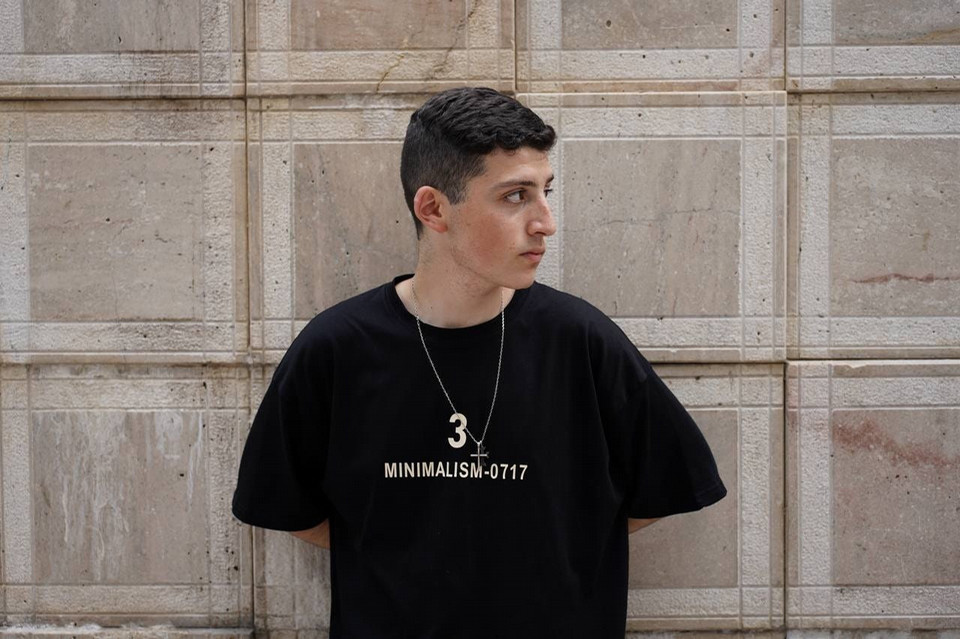Vanik Meljumyan: an Artist from Nagorno-Karabakh Creating Art for Collective Healing and Hope

Photo Credit: Vanik Meljumyan
Interview by Astrig Agopian, Namak Newsletter
“It is actually the moment to show art and love and joy and give hope to the people who are under blockade. It gives us strength.”
Vanik Meljumyan eagerly shares his limited electricity and internet timetable, excited for his very first interview, despite the blockade of his home. After a few difficulties, we finally manage to connect and have a call. The high school student was born in Nagorno-Karabakh’s capital of Stepanakert in 2007 and has lived there ever since. “I am so attached to Stepanakert. Even when I go somewhere else for a few days, something calls me back there,” the 16-year-old says.
But being a young boy in Nagorno-Karabakh has also meant living through wars and now a blockade. The psychological toll of these circumstances encouraged the young man to seek a creative outlet.
“These last few years were quite challenging. I felt the need to start getting involved and doing things,” Vanik says. He started volunteering for several community organizations, including Sunrise Stepanakert Arts and Culture Festival, in 2022. “That’s when I understood that art makes people alive and without art there is nothing,” he explains.
Since 2020, he has grown from a shy boy to a mature, sunny and ambitious teenager dedicating all his time outside of school to art.
“I started singing at a very young age and that was my first link to art. I also play many instruments and dance,” the young artist says. “It has been a year since I do more visual things including photography. It has become the best way for me to convey my emotions.”
Sunrise Stepanakert’s open call for this year encouraged artists to create work around the concept of edges. “For me, there are not that many edges in the world, it’s people who create them,” Vanik says. “It’s a very complicated and subjective topic.”
The budding artist created a series of photos taken with a cell phone and texts he wrote complementing them. The works offer a social commentary on edges –– both real and constructed –– and their impact on how humans navigate the world.
“I took six pictures that show the natural edges of the body and nature, things we do not enjoy fully because we have edges in our heads that make us closed minded,” he explains. “People are scared of loving, are scared of living, because there are irrational edges that are not actually there, should not be.”
Sunrise Stepanakert, as its name suggests, was supposed to take place in Nagorno-Karabakh, which was the case for the first two installments of the festival. But this year, due to the blockade of the region which has lasted for more than 200 days and deprived locals of access to medical care, food and electricity, the event was held between Stepanakert and Yerevan.
“When the blockade started, I figured that with the road closed and a tense situation, a cultural festival like Sunrise was an impossible dream. I was very sad about it,” Vanik says. While some may question the utility of cultural programs against the backdrop of a humanitarian crisis, Vanik believes it is more important than ever for residents to have artistic outlets.
“The blockade is of course a huge problem and a terrible situation. But I don’t think the blockade should stop us,” the young man says. “It is actually the moment to show art and love and joy and give hope to the people who are under blockade. It gives us strength.”
Vanik hopes to study art, and wants to apply to universities and academies in Armenia and abroad. But with the blockade, he has reconsidered his ambitions. “Only lucky people can choose what to do with their lives. I don’t know if I will be lucky, but will always create art in any case, even if I have to do another day job,” he explains. “It’s a form of therapy for me and good for collective healing.”
Vanik is grateful to the festival for giving him and others a platform through which to present their work to the public, including in the Armenian capital. “It is important to show Artsakh and not only in a negative way but also related to art and what we have to offer. Few people know about us except the bad news,” he says.
Despite the grave humanitarian situation, Vanik believes the blockade has made locals appreciate what is truly important in life, and connect even more deeply with their humanity and home region.
“I have noticed that here in Artsakh, people love and appreciate life even more since the beginning of the blockade,” he concludes. “They got away from material things and appreciate each other’s company more, being together, and got closer to art.”
This profile is part of a collaboration between Namak and Sunrise Stepanakert arts and culture festival.